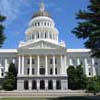California Supreme Court Restores the Integrity of Categorical Exemptions Under CEQA, But Questions Remain

March 2015
Number 12
The California Supreme Court has reversed a 2012 appellate court decision that, if allowed to stand, would have significantly narrowed the application of categorical exemptions under the California Environmental Quality Act (CEQA). (Berkeley Hillside Preservation v. City of Berkeley (March 2, 2015) 2015 Cal. Lexis 1213 ("Berkeley Hillside").) The Supreme Court's decision in Berkeley Hillside preserves the ability of a public agency to exempt itself from CEQA's requirements when relatively routine projects are at issue, thus avoiding delay and expense.
Lozano Smith represented the California School Boards Association (CSBA) as amicus curiae in support of the City of Berkeley (City). Our brief in the matter was joined by the Regents of the University of California and the Board of Trustees of the California State University. Six additional amicus briefs were filed on behalf of the City, including by the California League of Cities, other public agency organizations, and home building organizations. Additional amicus briefs were filed in opposition to the City, while the California Attorney General also submitted an amicus brief that took issue with both sides. The number of amicus briefs and attention to this case underscores the significance of the issues at stake.
The CEQA Guidelines (14 Cal. Code Regs., §§ 15000, et seq.) contain 33 categories of relatively routine project types which are presumed not to have a significant effect on the environment and are therefore exempt from further CEQA review. These categories are referred to as "categorical exemptions". However, the CEQA Guidelines also contain limited exceptions to these exemptions. One such exception states that a public agency may not rely on a categorical exemption when there is a reasonable possibility that the activity will have a significant effect on the environment due to "unusual circumstances."
This "unusual circumstances" exception has historically been subject to a two-prong test. First, the agency determines whether the project involves unusual circumstances. If not, the categorical exemption stands. If there are unusual circumstances, the second prong is to determine whether there is a reasonable possibility that those unusual circumstances will result in a significant effect on the environment. Where both prongs of the test are met, and there are potentially significant impacts, the agency can no longer rely on the categorical exemption.
In Berkeley Hillside, the City relied on categorical exemptions applicable to construction of certain infill development and limited numbers of single family residences in urban areas, and approved a project involving demolishing an existing home and replacing it with a larger home and an attached substantial 10-car garage. A suit was filed challenging the City's use of the categorical exemption. The trial court found in favor of the City. In 2012, an appellate court disagreed and reversed the trial court's decision, thus disallowing use of the categorical exemption. The appellate court essentially condensed the two-prong inquiry into one, broadening the scope of the exception and thereby narrowing the availability of all categorical exemptions. The court held that evidence of a "fair argument" that a project will have a significant impact "is itself an unusual circumstance" that invalidates a categorical exemption. This ruling would have greatly limited categorical exemptions. Public agencies would have been required to disprove any reasonable likelihood of a significant impact, and could have been forced to conduct extended analysis of impacts in order to rely on a categorical exemption. This would have greatly diminished the utility of the exemptions. The appellate court's conclusion that someone need only raise a "fair argument" of a potential impact to establish the existence of an unusual circumstance would have made it rather easy to defeat use of any categorical exemption. For further discussion of the court of appeal's decision, see Lozano Smith Client News Brief No. 16 (April 2012).
On March 2, 2015, the California Supreme Court reversed the court of appeal's decision. The Supreme Court found that, if the court of appeal's decision were allowed to stand, the categorical exemptions would serve no purpose as they would have little, if any, effect. The Court held that to establish the unusual circumstances exception, it is not enough for a challenger merely to provide substantial evidence that the project may have a significant effect on the environment. Under the plain language of the CEQA Guidelines, a potentially significant effect must be "due to unusual circumstances" for the exception to apply. The Court restored the two-part test, so that the "unusual circumstances" exception to the categorical exemption again generally relies on a finding both that there are unusual circumstances and that those circumstances will result in a significant impact. The Court determined that any other reading of "unusual circumstances" would inappropriately be "[r]eading the phrase … out of the regulation," which was precisely one of CSBA's central contentions.
The Supreme Court also discussed the standard of review that courts should use in construing the unusual circumstances exception. There are two such standards that could potentially apply. Under the "substantial evidence standard," the agency's finding of a categorical exemption is upheld if there is substantial evidence in the record to support the agency's conclusion that there will be no significant effect resulting from unusual circumstances. Under the "fair argument test," where there is a fair argument, based on substantial evidence, that the project may have significant impacts resulting from unusual circumstances, the exception defeats the exemption. The Supreme Court adopted a hybrid approach that uses different standards of review for different parts of the test. First, a court reviews an agency's determination as to whether there are "unusual circumstances" based on the more deferential "substantial evidence standard." If unusual circumstances are nevertheless found to exist, the public agency must apply the fair argument standard to its determination of whether there is a reasonable possibility of a significant effect on the environment due to those unusual circumstances. However, even as to that fair argument standard, the Court concluded that a court reviewing the agency's decision should rely on the substantial evidence standard to consider whether the public agency properly found there to be no fair argument of a significant effect. Though complex, these standards as set forth by the Court preserve a relatively deferential standard, which generally favors the agency.
Despite the favorable ruling for public agencies, the Court left open a number of issues. In particular, the Court gave no clear guidance on what constitutes an "unusual circumstance." The Court also indicated that if a significant impact will - not "may" - result from a project, that in itself can be evidence of unusual circumstances. This language in the decision is likely to cause confusion and debate, since it begins to swing back in the direction of the reversed appellate court decision. Finally, the Court remanded the case back to the lower court for reconsideration; depending on how the appellate court applies this decision in reconsidering the case, there may yet be further Supreme Court review in the future. For all of these reasons, public agencies should continue to proceed carefully in employing CEQA's categorical exemptions, and may wish to consult with legal counsel for assistance in navigating these issues. We expect that additional litigation will be forthcoming as public agencies and CEQA plaintiffs test the parameters of this decision. One important take-away from this decision is the importance of having a solid record to support the application of a categorical exemption.
If you have any questions regarding this case or CEQA issues in general, please contact one of our nine offices located statewide. You can also visit our website, follow us on Facebook or Twitter, or download our Client News Brief App.
Number 12
The California Supreme Court has reversed a 2012 appellate court decision that, if allowed to stand, would have significantly narrowed the application of categorical exemptions under the California Environmental Quality Act (CEQA). (Berkeley Hillside Preservation v. City of Berkeley (March 2, 2015) 2015 Cal. Lexis 1213 ("Berkeley Hillside").) The Supreme Court's decision in Berkeley Hillside preserves the ability of a public agency to exempt itself from CEQA's requirements when relatively routine projects are at issue, thus avoiding delay and expense.
Lozano Smith represented the California School Boards Association (CSBA) as amicus curiae in support of the City of Berkeley (City). Our brief in the matter was joined by the Regents of the University of California and the Board of Trustees of the California State University. Six additional amicus briefs were filed on behalf of the City, including by the California League of Cities, other public agency organizations, and home building organizations. Additional amicus briefs were filed in opposition to the City, while the California Attorney General also submitted an amicus brief that took issue with both sides. The number of amicus briefs and attention to this case underscores the significance of the issues at stake.
The CEQA Guidelines (14 Cal. Code Regs., §§ 15000, et seq.) contain 33 categories of relatively routine project types which are presumed not to have a significant effect on the environment and are therefore exempt from further CEQA review. These categories are referred to as "categorical exemptions". However, the CEQA Guidelines also contain limited exceptions to these exemptions. One such exception states that a public agency may not rely on a categorical exemption when there is a reasonable possibility that the activity will have a significant effect on the environment due to "unusual circumstances."
This "unusual circumstances" exception has historically been subject to a two-prong test. First, the agency determines whether the project involves unusual circumstances. If not, the categorical exemption stands. If there are unusual circumstances, the second prong is to determine whether there is a reasonable possibility that those unusual circumstances will result in a significant effect on the environment. Where both prongs of the test are met, and there are potentially significant impacts, the agency can no longer rely on the categorical exemption.
In Berkeley Hillside, the City relied on categorical exemptions applicable to construction of certain infill development and limited numbers of single family residences in urban areas, and approved a project involving demolishing an existing home and replacing it with a larger home and an attached substantial 10-car garage. A suit was filed challenging the City's use of the categorical exemption. The trial court found in favor of the City. In 2012, an appellate court disagreed and reversed the trial court's decision, thus disallowing use of the categorical exemption. The appellate court essentially condensed the two-prong inquiry into one, broadening the scope of the exception and thereby narrowing the availability of all categorical exemptions. The court held that evidence of a "fair argument" that a project will have a significant impact "is itself an unusual circumstance" that invalidates a categorical exemption. This ruling would have greatly limited categorical exemptions. Public agencies would have been required to disprove any reasonable likelihood of a significant impact, and could have been forced to conduct extended analysis of impacts in order to rely on a categorical exemption. This would have greatly diminished the utility of the exemptions. The appellate court's conclusion that someone need only raise a "fair argument" of a potential impact to establish the existence of an unusual circumstance would have made it rather easy to defeat use of any categorical exemption. For further discussion of the court of appeal's decision, see Lozano Smith Client News Brief No. 16 (April 2012).
On March 2, 2015, the California Supreme Court reversed the court of appeal's decision. The Supreme Court found that, if the court of appeal's decision were allowed to stand, the categorical exemptions would serve no purpose as they would have little, if any, effect. The Court held that to establish the unusual circumstances exception, it is not enough for a challenger merely to provide substantial evidence that the project may have a significant effect on the environment. Under the plain language of the CEQA Guidelines, a potentially significant effect must be "due to unusual circumstances" for the exception to apply. The Court restored the two-part test, so that the "unusual circumstances" exception to the categorical exemption again generally relies on a finding both that there are unusual circumstances and that those circumstances will result in a significant impact. The Court determined that any other reading of "unusual circumstances" would inappropriately be "[r]eading the phrase … out of the regulation," which was precisely one of CSBA's central contentions.
The Supreme Court also discussed the standard of review that courts should use in construing the unusual circumstances exception. There are two such standards that could potentially apply. Under the "substantial evidence standard," the agency's finding of a categorical exemption is upheld if there is substantial evidence in the record to support the agency's conclusion that there will be no significant effect resulting from unusual circumstances. Under the "fair argument test," where there is a fair argument, based on substantial evidence, that the project may have significant impacts resulting from unusual circumstances, the exception defeats the exemption. The Supreme Court adopted a hybrid approach that uses different standards of review for different parts of the test. First, a court reviews an agency's determination as to whether there are "unusual circumstances" based on the more deferential "substantial evidence standard." If unusual circumstances are nevertheless found to exist, the public agency must apply the fair argument standard to its determination of whether there is a reasonable possibility of a significant effect on the environment due to those unusual circumstances. However, even as to that fair argument standard, the Court concluded that a court reviewing the agency's decision should rely on the substantial evidence standard to consider whether the public agency properly found there to be no fair argument of a significant effect. Though complex, these standards as set forth by the Court preserve a relatively deferential standard, which generally favors the agency.
Despite the favorable ruling for public agencies, the Court left open a number of issues. In particular, the Court gave no clear guidance on what constitutes an "unusual circumstance." The Court also indicated that if a significant impact will - not "may" - result from a project, that in itself can be evidence of unusual circumstances. This language in the decision is likely to cause confusion and debate, since it begins to swing back in the direction of the reversed appellate court decision. Finally, the Court remanded the case back to the lower court for reconsideration; depending on how the appellate court applies this decision in reconsidering the case, there may yet be further Supreme Court review in the future. For all of these reasons, public agencies should continue to proceed carefully in employing CEQA's categorical exemptions, and may wish to consult with legal counsel for assistance in navigating these issues. We expect that additional litigation will be forthcoming as public agencies and CEQA plaintiffs test the parameters of this decision. One important take-away from this decision is the importance of having a solid record to support the application of a categorical exemption.
If you have any questions regarding this case or CEQA issues in general, please contact one of our nine offices located statewide. You can also visit our website, follow us on Facebook or Twitter, or download our Client News Brief App.
As the information contained herein is necessarily general, its application to a particular set of facts and circumstances may vary. For this reason, this News Brief does not constitute legal advice. We recommend that you consult with your counsel prior to acting on the information contained herein.







